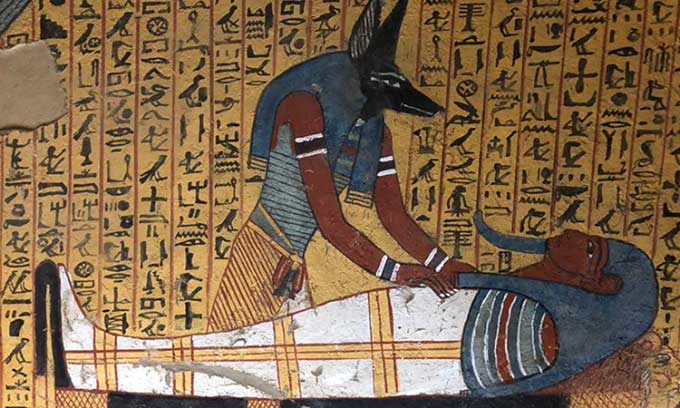The unusual bone structure and posture of an ancient Egyptian woman help experts determine that she had suffered a stroke at a young age.

A carving depicting the god Anubis caring for a mummy. (Photo: Jean Robert Thibault)
A team of experts from New Jersey Institute of Technology (USA), University of Alcalá (Spain), and American University (Egypt) found evidence of a stroke in the 2,700-year-old mummy of an Egyptian woman, as reported by Ancient Origins on July 23. The new study was published in the journal World Neurosurgery.
“The woman lived in ancient Egypt and had suffered a stroke. This caused her brain hemisphere to be paralyzed, and she had to live with this condition for many years“, the research team stated.
This new discovery is significant because scientists had never found clear evidence of stroke-related damage in any other ancient skeleton. Previously, the oldest known skeletal remains of a stroke patient were of an 18th-century Italian priest named Don Giovanni Arcangeli.
The Egyptian woman was approximately 25 to 40 years old and lived during the 25th Dynasty. Her mummy was excavated at Dra Abu el-Naga, Egypt. In the new study, scientists conducted X-rays of the mummy to gather more information about the structure and other characteristics of the skeleton.
“This is the first evidence of a stroke caused by ischemia in ancient Egyptians. The woman had a stroke at a young age. This partially disabled her, but the attentive care of her family and friends helped her survive into old age”, said Egyptologist Salima Ikram from American University, a co-author of the study.
The deformed skeleton helped the research team identify that the woman had suffered a stroke. Her shoulder was contracted, and her head was unnaturally tilted downwards. The right arm was extended along her body, while the left arm was bent at the elbow, with the forearm resting on her chest in an unusual curled position. Both legs were straight and placed closely together, but the left foot was slightly twisted.
During the embalming process, the ancient people attempted to correct the woman’s distorted posture of her head and chest. They placed two wooden planks behind her, helping to straighten her posture compared to when she was alive. Another wooden plank resembling a crutch was also placed beside the skeleton, likely because she needed it to walk after suffering stroke-related injuries.
The discovery of the wooden plank is incredibly important, as it may lead archaeologists and Egyptologists to reevaluate similar artifacts previously excavated. Previously, they believed these wooden planks found in graves were due to religious beliefs. However, the new study suggests they may have been placed there for medical purposes.





















































